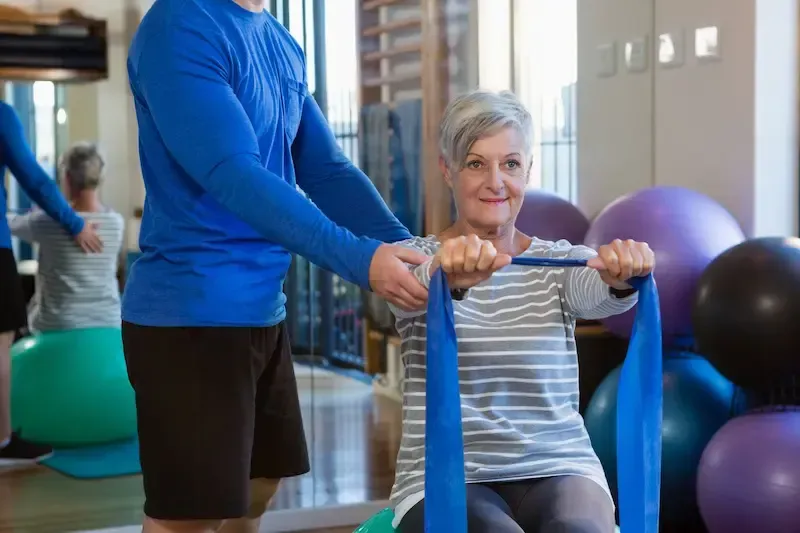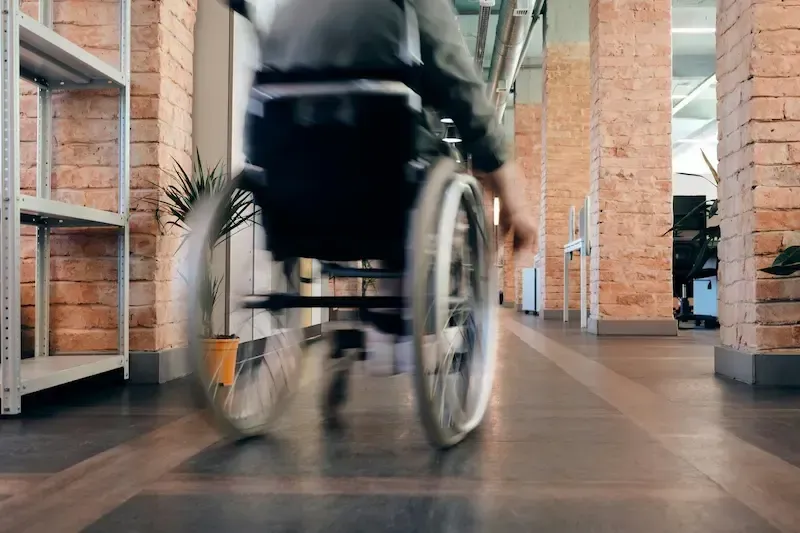Managing Diabetes in Seniors: How Exercise Can Improve Health and Quality of Life
As the population ages, the prevalence of diabetes among seniors continues to rise. According to the CDC, more than 25% of adults over the age of 65 are living with diabetes. Managing diabetes in seniors is critical to maintaining overall health, preventing complications, and improving quality of life. One of the most effective ways to manage this condition is through regular exercise, which plays a significant role in blood sugar control and overall wellness.
Understanding Diabetes in Seniors
Diabetes is a chronic condition that affects how the body processes blood sugar (glucose). In seniors, managing this condition can be more complex due to the natural aging process, which can affect metabolism, physical activity levels, and other chronic conditions. Common complications from diabetes include cardiovascular disease, nerve damage, kidney issues, vision problems, and a higher risk of infections.
As people age, they may also experience physical limitations, making it more challenging to stay active. However, staying physically active is one of seniors' most powerful tools to manage diabetes and reduce the risk of complications.
The Benefits of Exercise for Seniors with Diabetes
Exercise offers numerous health benefits for seniors with diabetes, including:
Improved Blood Sugar Control
Regular physical activity helps the body use insulin more efficiently, allowing cells to absorb glucose from the bloodstream more effectively. This can lead to lower blood sugar levels and a reduced need for medication.
Enhanced Cardiovascular Health
Seniors with diabetes are at a higher risk of heart disease and stroke. Exercise helps improve circulation, lower blood pressure, and strengthen the heart, reducing the risk of cardiovascular complications.
Weight Management
Maintaining a healthy weight is crucial for managing diabetes. Exercise helps burn calories, build muscle mass, and prevent the accumulation of excess fat, which can worsen insulin resistance.
Improved Mobility and Joint Health
Diabetes can contribute to joint pain and stiffness, making it harder for seniors to stay active. Low-impact exercises, such as walking, swimming, and stretching, can improve joint flexibility and reduce discomfort, making it easier to stay mobile.
Better Mental Health
Exercise has been shown to reduce stress, anxiety, and depression—all of which are common in seniors managing chronic conditions like diabetes. Physical activity also releases endorphins, boosting mood and enhancing overall mental well-being.
Fall Prevention
Diabetes can cause nerve damage and affect balance, increasing the risk of falls. Regular exercise improves strength, coordination, and balance, critical for reducing fall risk and maintaining independence.
Safe Exercises for Seniors with Diabetes
Not all exercises are suitable for everyone, especially for seniors managing diabetes. Here are some low-impact, safe options to consider:
- Walking is a simple and effective way to stay active. It can be done indoors or outdoors and at your own pace.
- Strength Training: Using light weights or resistance bands can help build muscle, improve bone density, and boost metabolism.
- Yoga and Stretching: Gentle yoga and stretching exercises can increase flexibility, reduce stress, and improve joint health.
- Swimming or Water Aerobics: Water exercises are easy on the joints and provide a full-body workout, making them ideal for seniors with mobility issues.
- Cycling: Stationary or outdoor cycling is a low-impact way to get the heart pumping and improve leg strength.
Tips for Getting Started
If you’re a senior with diabetes, it’s essential to approach exercise with caution and care. Here are some tips to help you get started safely:
- Consult Your Doctor: Before beginning any new exercise program, consult your healthcare provider to ensure the activities are safe and appropriate for your condition.
- Start Slowly: Begin with short, low-intensity workouts and gradually increase the duration and intensity as your fitness improves.
- Monitor Blood Sugar: Exercise can affect blood sugar levels, so it’s essential to monitor your levels before, during, and after exercise. Keep a snack handy in case your blood sugar drops too low.
- Stay Consistent: Aim to incorporate some form of physical activity into your routine most days of the week. Consistency is key to reaping the full benefits of exercise.
- Listen to Your Body: If you feel dizzy, short of breath, or experience chest pain, stop exercising and seek medical advice immediately.
Diabetes is a challenging condition, especially for seniors, but it can be managed effectively through regular exercise. Staying physically active helps improve blood sugar control, reduce the risk of complications, and enhance overall well-being. By incorporating safe, low-impact exercises into your routine, you can take control of your health and enjoy a more vibrant, independent life.
At Senior Fitness Palm Springs, we specialize in creating personalized exercise programs tailored to the unique needs of seniors with diabetes. Our experienced trainers can help you safely incorporate physical activity into your lifestyle, improving your health and quality of life.
If you’re ready to take the first step toward better health, contact us today for a complimentary consultation!












